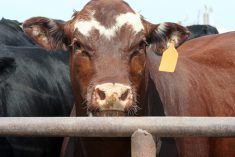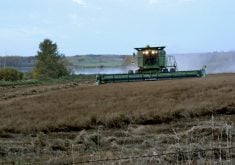Western Canadian feeder cattle prices were generally steady with week-ago levels with no major feature influencing the market structure. The market actually felt sluggish while overall auction volumes remain at seasonal highs.
Winter-type conditions in southern Alberta caused a defensive tone among major feedlot operators who shied away from bawling unweaned non-feature lighter calves. However, heavier pre-conditioned 750-pound-plus cattle were well supported, with buyers eyeing the March-April fed cattle market. June live cattle futures continue to trade at a sharp discount to the April contract so there is no incentive to increase bids on higher risk lighter calves.
Read Also

Canadian trade data delayed by U.S. government shutdown
Canadian international trade data for September will be delayed indefinitely due to the ongoing partial shutdown of the United States government, Statistics Canada said Friday, Oct. 24.
Cattle inventories in Alberta and Saskatchewan are running approximately eight to 10 per cent higher than last year. There was a tendency for Prairie feedlots to fill up to comfortable levels early in the season and now we find managers being more fussy on replacement cattle.
Secondly, the feeder market does not have the buying power from past years, given the margins earlier in 2013. Weekly slaughter and feeder cattle exports to the U.S. were lower for the week ending Oct. 26 and it will be interesting if this trend continues during the last two months of the year.
Talk in the industry suggests smaller backgrounding operations filled up quite quickly after the grain harvest. Lower feed grain prices usually encourage certain farmers to place cattle in custom feedlots, but buying interest has also been absent so far. I call this peripheral feeder cattle demand, which has provided little market influence this fall.
The feeder market has likely run the course for the time being. I believe the overall story is a lack of demand at the current price levels. The window is closing on feeders that will be ready for the March-April slaughter, which has been the main factor holding the market at the current levels.
— Jerry Klassen is a commodity market analyst in Winnipeg and maintains an interest in the family feedlot in southern Alberta. He writes an in-depth biweekly commentary, Canadian Feedlot and Cattle Market Analysis, for feedlot operators in Canada. He can be reached by email at [email protected] for questions or comments.
















